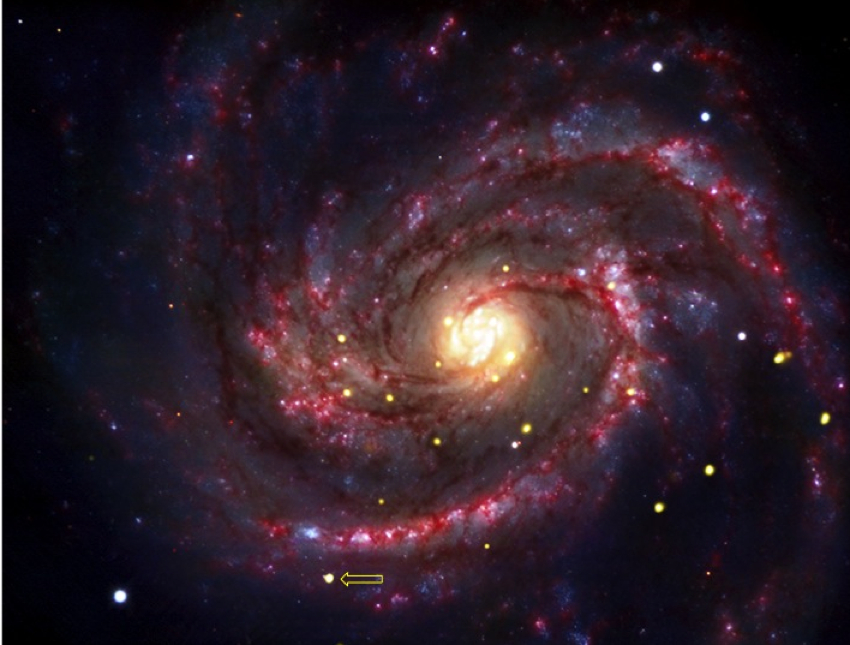
 Credit: X-ray: NASA/CXC/SAO/D.Patnaude et al., Optical: ESO/VLT, Infrared: NASA/JPL/Caltech
Credit: X-ray: NASA/CXC/SAO/D.Patnaude et al., Optical: ESO/VLT, Infrared: NASA/JPL/Caltech
A New Rent?
If space and time make up the fabric of the Universe, a black hole is a tear in that fabric. Some black holes are created when a massive star runs out of nuclear fuel and it can no longer support itself against the enormous crush of its own weight, and collapses. Somehow this great inward crush generates an explosive outpouring of energy, an event called a supernova, in which the exploding star becomes brighter for a brief period of time than the combined brightness of the other stars in its host galaxy. The image above is a composite X-ray (from Chandra, in yellow), optical (from the VLT, in yellow-white and blue) and infrared (from Spitzer, in red) picture of the spiral galaxy M100. A number of yellow X-ray sources can be seen. One in particular (marked by the yellow arrow) in the outskirts of one of M100's spiral arms marks the location of a supernova, SN 1979C. Discovered by Gus Johnson, SN 1979C is marked by a bright spot of X-ray emission which has remained roughly constant in brightness over 12 years. Astronomers have found that this X-ray source exhibits tell-tale characteristics which mark it as a likely black hole. If so, it would be the youngest known black hole in our local Universe, offering astronomers a unique opportunity to study the growth of a new rent in spacetime.
Published: November 29, 2010
<
HEA Dictionary ● Archive
● Search HEAPOW
● Other Languages
● HEAPOW on Facebook
● Download all Images
● Education ● HEAD
>

Each week the HEASARC
brings you new, exciting and beautiful images from X-ray and Gamma ray
astronomy. Check back each week and be sure to check out the HEAPOW archive!
Page Author: Dr. Michael F. Corcoran
Last modified Monday, 26-Feb-2024 17:23:55 EST


